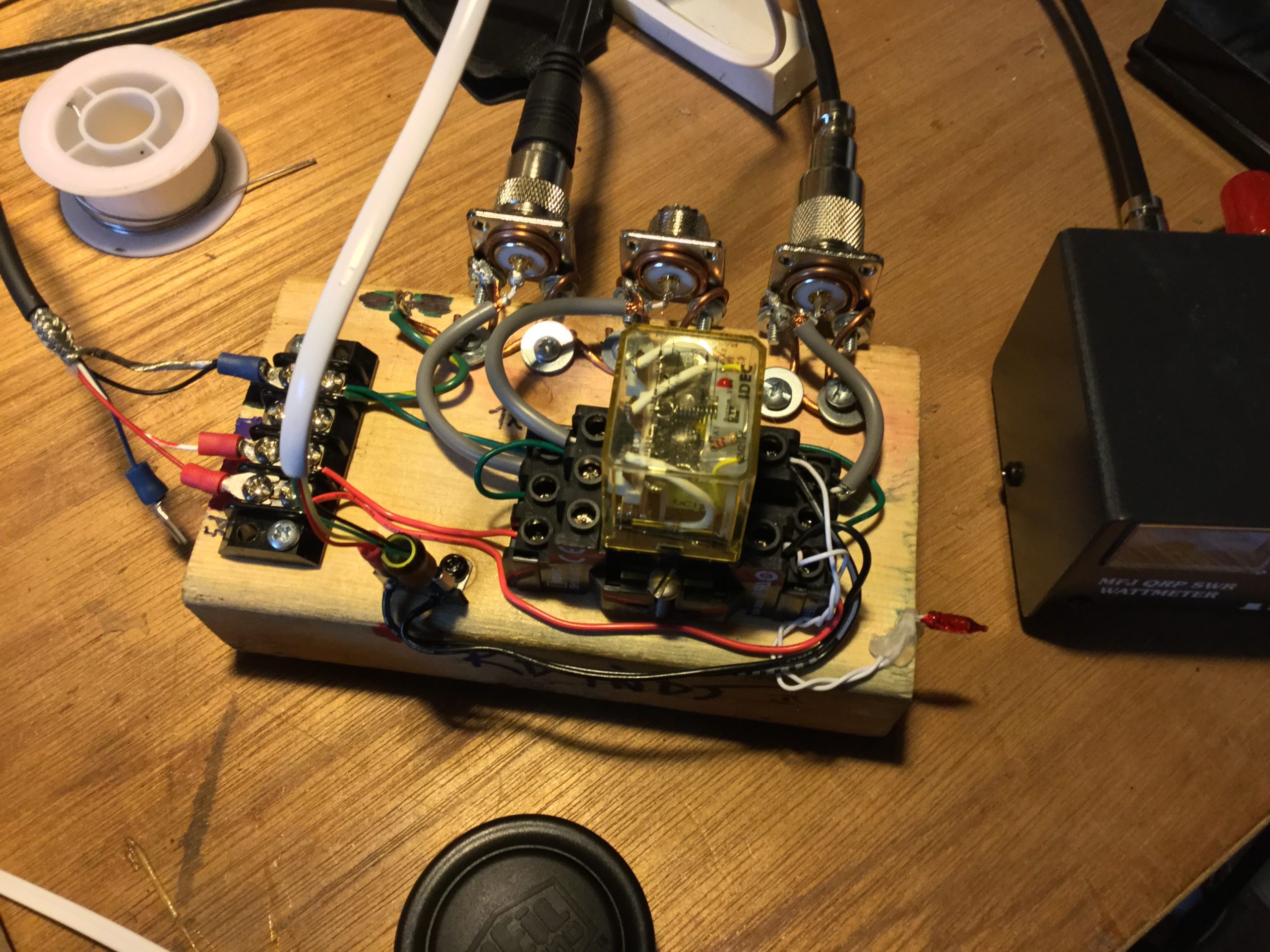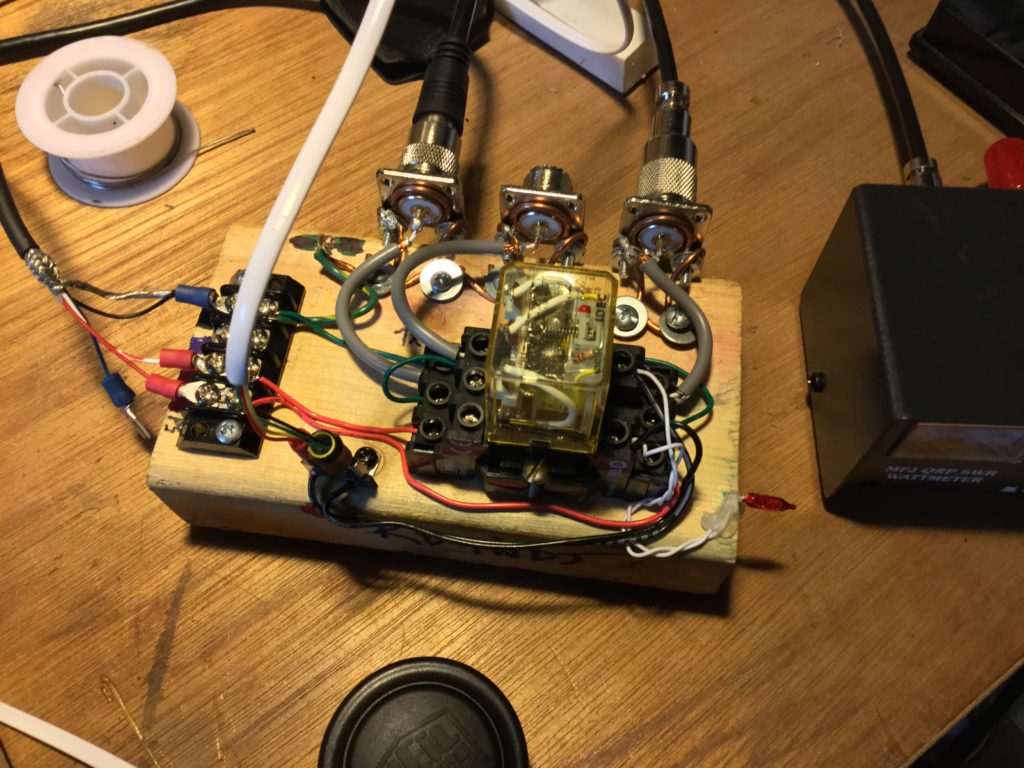
I’ve been calling it ‘my monster’ because it has taken on a Frankenstein-like absorption in my consciousness — and unconsciousness. Perhaps I’m also a bit self-conscious about this project as well. All this for what? A QRP transmitter? And AM phone? Really?
So the relay coil, in Heil’s version, was house-current (AC.) In my installation situation, this made way too much noise and garbled the audio. (See last edition.) I ordered a 12 volt DC relay, and a socket to simplify the install. My initial choice of source informed me of a delay in shipping due to COVID-19 and global supply problems. So I tried placing an order with Allied Electronics. (Back in the day, Allied Radio in Chicago was the source of a catalog I used to dream with. And order from.)
The last sentence in the linked article:
“On the brink of the new millennium, UK-based Electrocomponents buys Allied in 1999, now operating 69 sales offices and posting sales of $178 million for the year. Allied moves to a new facility in Fort Worth in 2007, complete with a 300,000 square foot warehouse and 57,000 square feet of office space.”
The new Allied so alarmed my bank when I placed an order for a relay and socket that the bank suspended my debit card. So… several hours on the phone…
And then, a few days ago, the relay and socket arrived, and I got down to the above rework.
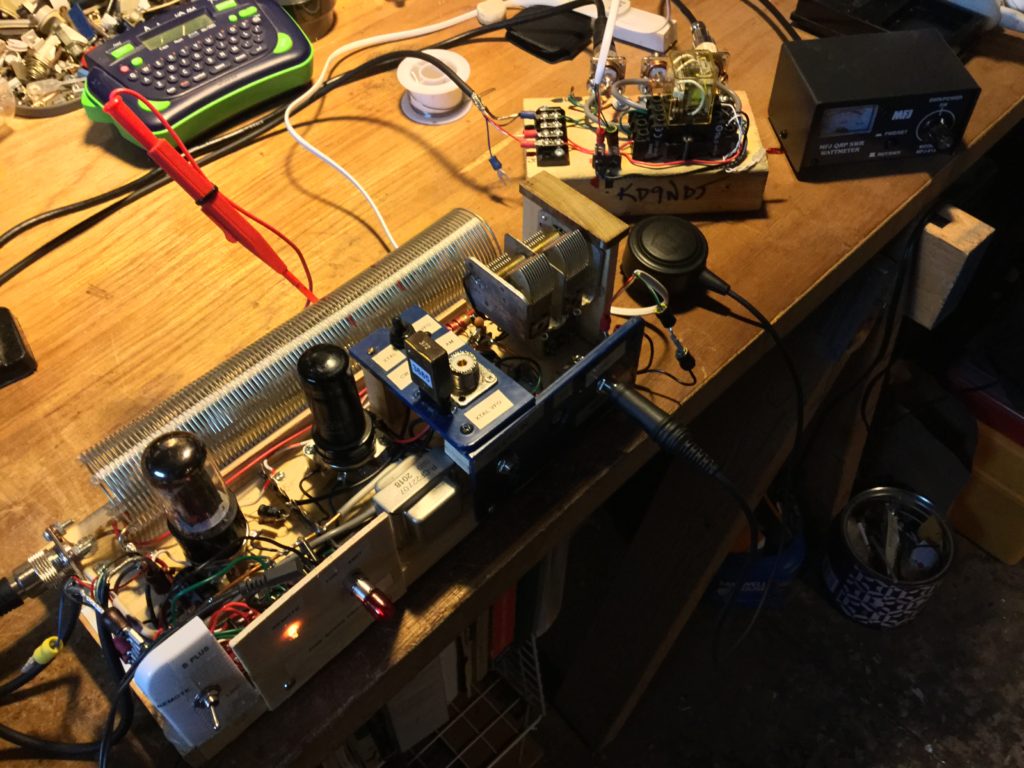
I wanted to retain the potential for keying the transmitter locally, without the VFO and the T/R switch. I mounted a switch on a scrap of plastic that selects between B-Plus routings (one pole of a triple throw double pole) and selecting between two indicator lamps (the other pole). I wanted more robust, shielded cable for the B Plus between the relay and the transmitter, and between the power supply and everything downstream.
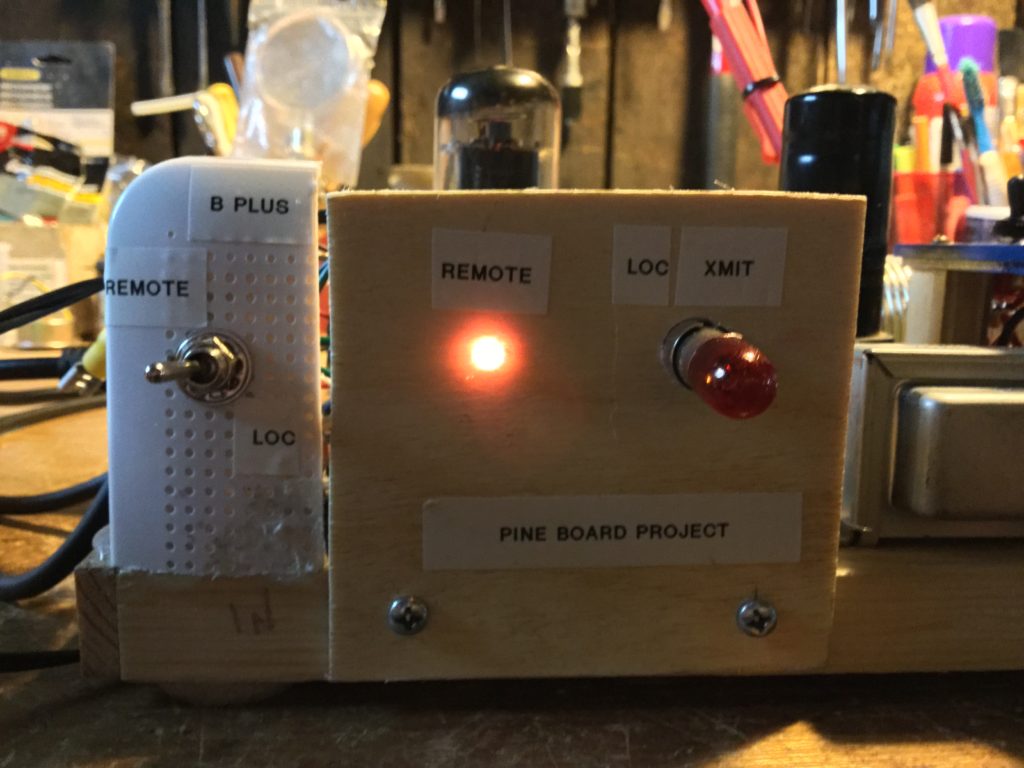
The photography is not ideal. I was working with the live rig while shooting. I used the power supply I made on Dad’s pine board for the Heath VFO, which is very similar to the one in the shack for the project rig. It lacks the vacuum tube option, so puts out the higher voltage B Plus, as well as filament and lower voltage B Plus (as required by the Heath).
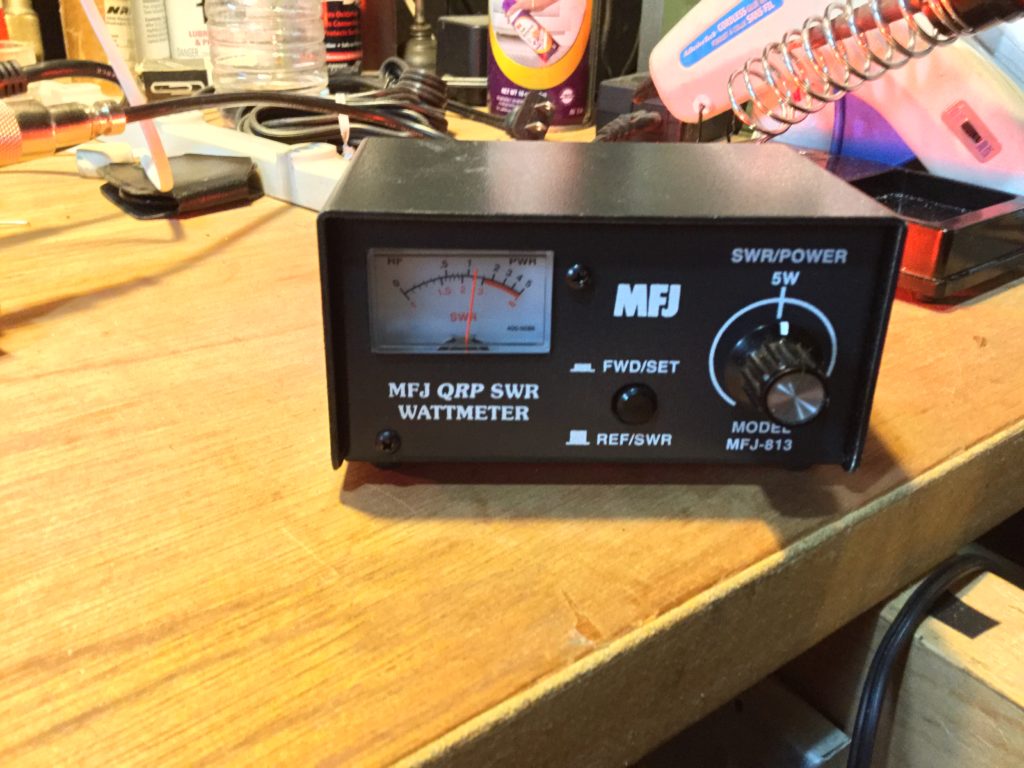
As seen above, with the QRP wattmeter in the 5 Watt position, I’m getting a bit over 1 watt of carrier. No idea how accurate this meter is, but this is a reliable indicator of rough success. The proof, of course, was checking out the result when the rig is back in the shack and being driven by its VFO.
The result: a healthy carrier, excellent audio via various receivers, and a calm, glitch free shack. So. My monster is alive. It now needs to be on the air. I am, of course, not limited to barefoot operation. The sequencing system built in to the K3NG keyer will allow safe ops with the Ameritron AL-80B.
